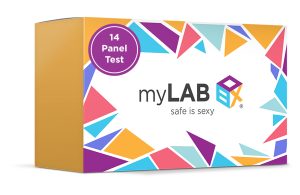Raising Awareness Of Viral Hepatitis During Hepatitis Awareness Month

Hepatitis Awareness Month: Understanding the Risks
May Is Hepatitis Awareness Month. The federal government, the Centers for Disease Control and Prevention (CDC) and numerous other agencies and community allies are joining together to raise awareness of viral hepatitis.
What is Hepatitis?
First, let’s discuss exactly what viral hepatitis is. There are multiple strains of this illness, each differentiated by a specific letter. Put simply, hepatitis is an infection that causes inflammation of the liver. Now, there are a variety of causes for hepatitis. It can also be caused by drugs, alcohol use, or certain medical conditions. More often than not, however, it is caused by a virus, so we’ll focus on that cause in this article. The most common forms of this illness are known as hepatitis A, B, and C.
How Common is Hepatitis?
Believe it or not, hepatitis is running rampant across the nation. According to the CDC, there are an estimated 2.7 million to 3.9 million people in the United States living with chronic hepatitis C. When it comes to hepatitis B, there are 700,000 to 1.4 million people living with the infection. With these two simple strains alone, we can already see that between 3.4 million and 5.3 million people are living with hepatitis.
What Are the Symptoms of Hepatitis?
There are a great number of infections that are asymptomatic. This means that there may not be any easily visible symptoms of infection. Therefore, a person cannot always rely on their eyesight and intuition alone to determine if they are infected. Unfortunately, hepatitis often falls into this category. Within the first few weeks after infection, there are often no easily detectable symptoms. This is called “the acute phase.”
That said, as the infection rages on, the symptoms of types A, B, and C may include fatigue, nausea, poor appetite, belly pain, a mild fever, or jaundice. For hepatitis B and C, there may not be any visible signs for years. Massive liver damage could be occurring before a person even realizes that they are infected. Luckily, by getting tested, an infected person can get ahead of these complications.
Here is a bit more about the most common strains of hepatitis:
Hepatitis A
Hepatitis A typically takes about 2-7 weeks to incubate. Unfortunately, there isn’t a cure for Hep A. Once you have it, you have it for life. That said, this strain usually doesn’t cause many long-term problems. Any visible symptoms are quite treatable, as long as you’ve been properly diagnosed.
Hepatitis B
Hepatitis B incubates over the course of 3-6 weeks. Usually, symptoms will show themselves roughly three months after initial infection.
Like Hep A, there is currently not a cure for Hep B. To this end, Hep B can cause liver disease if left untreated. It can be spread in several ways, but sexual activity is among the most common forms of transmission.
In some cases, Hep B can become chronic. In this situation, Hep B may lead to liver cancer, liver failure, or cirrhosis. This can result in irreparable damage and scarring.
Hepatitis C
Unlike Hep A and B, Hepatitis C is curable! However, the incubation period for this treatable infection is longer than many of the other infections discussed in this article. Hep C will show up on test results about eight to nine weeks after sexual activity. If you test positive for this sexually transmitted infection, you should test again three months after treatment.
Who Is in Danger for Contracting Hepatitis?
As you’ve probably guessed, every sexually active adult should be wary of hepatitis. Using protection is always recommended. After all, safe sex is smart sex. Beyond that, it is recommended that every adult plan to test for STIs every 3-6 months.
The more you know about your overall health, the better prepared you’ll be to deal with the consequences of infections such as these.
Further Information for Hepatitis Awareness Month
Hepatitis Awareness Month is a good time to take extra care to educate yourself. Here are some recommended reading materials from the CDC:
- Know More Hepatitis is an educational campaign aiming to increase testing for Hepatitis C among people born during the years between 1945 and 1965. Supporting fact sheets, posters, infographic, buttons & badges, live-read radio scripts, templates, and other images can all be found under campaign materials.
- Know Hepatitis B is an educational campaign aiming to increase testing for Hepatitis B among Asian Americans and Pacific Islanders. This multilingual campaign has materials in English, Chinese, Korean, and Vietnamese with select fact sheets also available in Burmese, Hmong, Khmer, and Lao. Supporting videos, fact sheets, posters, infographics, customizable flyers, and other materials can all be found under campaign materials.
- Read About the CDC’s Viral Hepatitis Action Plan to harness available tools and focus the U.S. response to viral hepatitis. The Action Plan features many opportunities for non-federal stakeholders to take action in support of reaching its goals.
- Finally, you can always rely on the myLAB Box’s informative Safe is Sexy blog , our resource pages or speak with our customer service team. Additionally, you can test for Hep B and Hep C from the comfort of home.
Popular Tests

Total Box
14 Panel STD Test
In Stock – Free Shipping
$369 – $399
